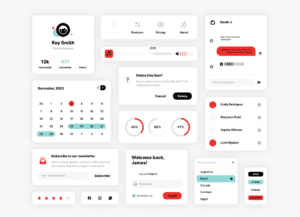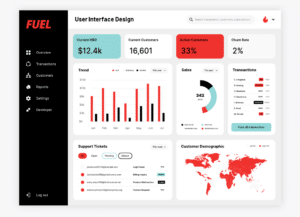Today more than ever, we’re tied to our mobile devices. In some ways, they’ve actually become an extension of us–an“extra hand” that gives us quick access to practically anything we can possibly need or imagine. So it’s no wonder that when we want to respond to the many calls-to-action floating around our daily lives, we reach for our smartphones.
As we depend on our mobile devices more and more, and as they continue to become faster and more powerful, we expect them to keep up with our own thought processes, questions, and curiosities, which move at light speed. Hours are spent scrolling and researching. But what is it that helps us get the information we want most? How do we decide where to spend our time? If we like an experience, we’re more willing to stay; if it seems outdated or clunky, we’re going to bounce. This is why “mobile-first design” is so important.
But what does that even mean? Responsiveness? Quick load speed? Well, it’s not that simple either.
The concept of “mobile first” covers quite a few things across user experience: load speed, user flow, text size, color contrast, the use of white space… all of which are factors that affect things like your Google rating and accessibility score.
The average smartphone screen is 5” – 6.5” and 49% of us use our phones with one hand. Smartphones account for more than 50% of website traffic globally. These facts dictate the “standard” placement of key calls-to-action so that users are able to quickly click through to their conversion points. Why? Because when people are scrolling through your site, they spend approximately eight seconds deciding if it’s worth their time before they move on to the next.
So what can you do to keep them interested?
Create a text hierarchy
As we say in the marketing biz, skimmers gonna skim (We’re sure someone said that once). So make skimming easier for your readers. Go bigger for your headers and subheads, and rely on contrast to make text more digestible. And keep it succinct – endless scrolling increases bounce rates and those lost prospects are most likely not coming back.
Use clear navigation
You know how some websites can be really confusing, with too much info all over the place and no clear calls to action? Don’t be that guy. Keep navigation simple and clear. Don’t make your users guess how to find what they’re looking for. If they have to think too hard about it, they’ll move on.
Streamline content
Have you seen how small mobile screens are? They’re tiny. Like, tiny tiny. Much smaller than a computer screen. So why try to fit everything about your business into a space a fraction of the size? Streamlining content helps keep more on the screen at once and allows the user to find information more quickly.
Consider the thumbs
On mobile, users let their thumbs do the heavy lifting. Which is why it’s important to consider where people can easily tap on the screen. Placing key calls-to-action within tapping distance is key to helping your users reach their goal (literally).
Simplify forms and minimize data entry
We don’t really need to elaborate on this one. Some of us have fat fingers and sometimes even autocorrect can’t help us. And we know you feel that, too, don’t lie.
Don’t forget the bigger picture
No, we’re not talking about screen size (we covered that two sections ago). We’re talking about the overall user experience. Because people tend to use multiple devices throughout the day, whether it’s researching on their desk top, skimming on their smartphone, or sharing content on their tablet. It’s important that your website provides a seamless experience across all platforms, because users expect a certain level of consistency across every device.
Review the data and evolve
If at first you don’t succeed, try again. That’s why it’s important to analyze data gleaned from your users to improve your website. For example, maybe they think an image is clickable, but it’s actually not. Or maybe you notice that a majority of users jump ship at a certain point. These things happen, but they’re also fixable. Reviewing data ensures that no matter what the new usage trends are, your site remains user-friendly — which is what “mobile first” is all about!
At the end of the day, most users will view your website on their mobile device. Which is why modern marketing practices dictate leading with mobile first design. So just think of the experience you would want when scrolling through your phone, and replicate that experience on your website. Consider it the golden rule of web design.
The post Mobile First Design appeared first on FUEL.







